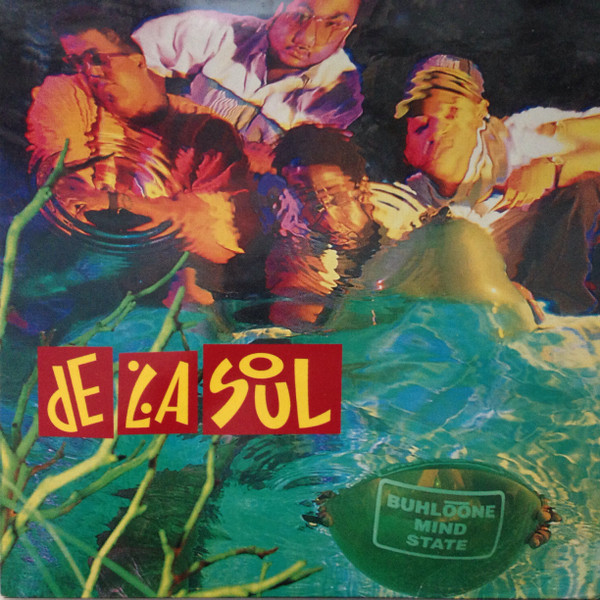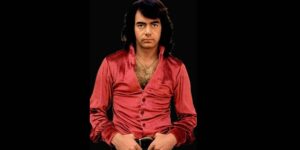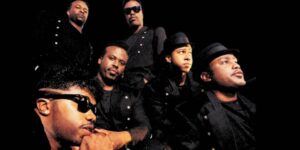De La Soul: A Masterclass in Nonsensical Rhyme Games
A Look Back at De La Soul’s Evolution
This article originally appeared in the November 1993 issue of SPIN.
It was easy for me to hate Saturday Night Live pre-Eddie Murphy—sometimes even post-Eddie. Garrett Morris needed his personal volume turned up, the skits were corny and arch, and the performers were too adept at being moronic. Those Coneheads and bumblebees and Caucasian samurais—amusing and ironic—told truths through their humor that spoke to their culture and generation, but those outside the circle, like me, watched the show with blank, deadpan expressions, bugging out on the awkward goofiness. It was intriguing, but wack.
De La Soul: The Antithesis of Run-D.M.C.
In theory, De La Soul is like Saturday Night Live, pre-Eddie Murphy: corny, arch, and the rest. Except it’s far from wack. Since 1989’s 3 Feet High and Rising, De La Soul has been paying for having been perceived as the Extra Cool Crew. It spoke to a larger audience. For a slew of reasons—but primarily because it had a daring, clean-cut look and a melodic, riddle-ridden style—De La Soul crossed over big time, and the music media served it up like freshly shucked oysters, pearly and wet, ready for slurping. De La Soul was stamped “thinking” hip hop we all could get into. The antithesis of Run-D.M.C. and “Hard Times,” De La was lauded for its introspection, codes, and between-song skits. It was (an) alternative. And it was clear from just the title of its muggy second album, De La Soul Is Dead, that the trio hated it.
Buhloone Mind State: A Collection of Songs
While Buhloone Mind State is perhaps the least wandering De La Soul album, the songs that run the wildest through the tall cornstalk rules of grammar, poetry, and sense are the ones that give the collection its juice. The taunting “I Am I Be,” a more mature sequel to 3 Feet High’s “Me Myself and I,” slams the record business, black Greek organizations, friendship, and most searingly, that heavy, slippery thing known as “black man’s pride.” Other songs, especially “Patti Dooke,” which has the trio “runnin’ through the trenches,” stop just short of sagging with the bluesy funk of self-examination. Buhloone Mind State is black male angst in an evasive manifestation. De La is tripping, maybe hurting, even growing, and it’s saying so, sort of. These are a bewildering set of songs—mazelike, a job to figure out. The tracks are seldom blunt, but often beautiful.
A Message from De La Soul
And De La Soul wants the world to know there’s no gun-toting or testicle gulping included in their angst: “I don’t rest in Compton so I don’t own a gat,” they proclaim in “Patti Dooke,” and “I be the in cuz the brother holdin’ glocks is out / I be the in cuz the pusher runnin’ blocks is out / I be the in cuz the kid smokin’ weed shootin’ seed which leads to a girl’s stomach being ’bout half a ton is out,” they explain in “Eye Patch.” But it’s when Posdnuos spits out that “gangsta shit is outdated / Posdnuos is complicated” that the album finds its frozen kernel, the spot around which the rest of the album revolves.
The Music and the Message
De La Soul is still blowing out nonsensical rhyme games you could easily play patty-cake to: “Can the cat’s tongue slip / Ya do di dah zip / Take the horse into the Jolly Ranch…the good the bad and Uncle Tom / Beat it kid / Show the sheik / Cuz I found a fool.” Prince Paul’s production swells and breaks and rolls up on hip hop’s rocky shore, foamy and cool, but no matter the craftsmanship of the beats or the rhymestyles, the question must come up: What the fuck are they talking about? It’s frustrating. You curse them for doing that cryptic shit on purpose, and you wish that the brothers would just say what they mean. But then a line slips off one of the boys’ tongues that attaches itself to you like a pretty pink starfish: “a Day-Glo nigga gets the red doormat.” That line, from in the middle of “En Focus,” is talking about hip hop and stardom and light-skinnedness and the need we all have for people to look at us and pay attention—all of that, all at the same time.
Conclusion
De La Soul is still blowing out nonsensical rhyme games, but it’s the lines that attach themselves to you like a pretty pink starfish that make it all worth it. The album is a masterclass in cryptic communication, but it’s the message that shines through the noise. De La Soul is speaking to us, and we’re listening.
FAQs
Q: What is De La Soul’s significance in the hip-hop world?
A: De La Soul is a pioneering group in the hip-hop world, known for their unique blend of humor, introspection, and social commentary.
Q: What is the significance of the title "De La Soul Is Dead"?
A: The title "De La Soul Is Dead" is a nod to the group’s dissatisfaction with their early success and their desire to push the boundaries of hip-hop.
Q: What is the meaning behind the lyrics in "Patti Dooke"?
A: The lyrics in "Patti Dooke" are a commentary on the black Greek organizations and the pressures they put on their members.
Q: What is the significance of Prince Paul’s production on "Buhloone Mind State"?
A: Prince Paul’s production on "Buhloone Mind State" is a key element in the album’s sound, providing a unique blend of jazz, funk, and hip-hop.
Q: What is the message behind the album "Buhloone Mind State"?
A: The message behind "Buhloone Mind State" is one of black male angst and the need to find one’s identity in a world filled with pressure and expectation.





